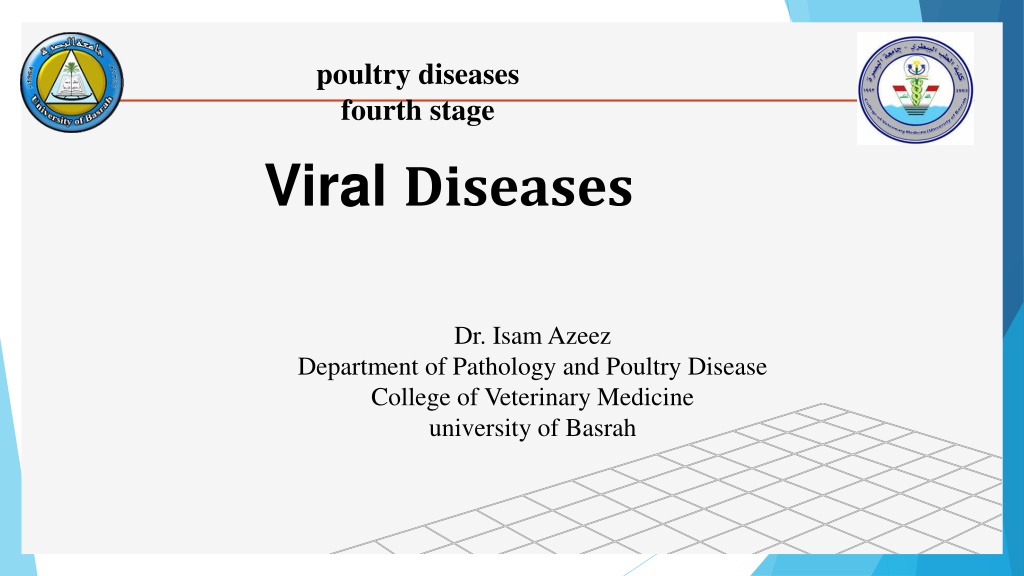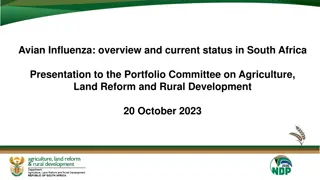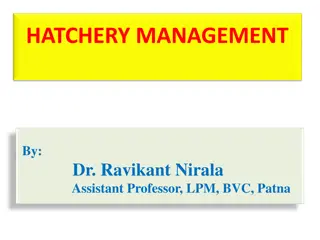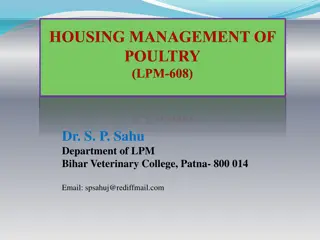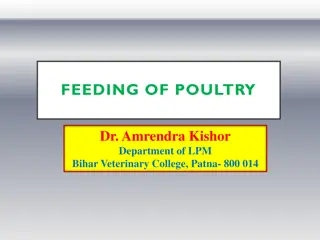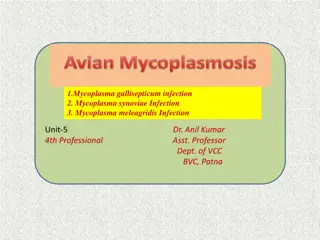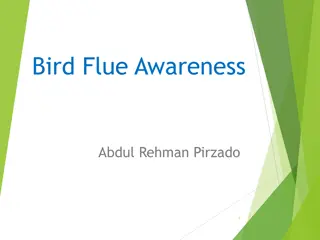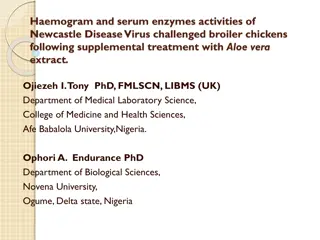Understanding Viral Diseases in Poultry: Newcastle Disease and Avian Influenza
Viral diseases like Newcastle Disease (ND) and Avian Influenza (AI) pose significant threats to poultry farming, impacting bird health and production. ND, caused by Avian paramyxovirus type 1, is highly contagious and manifests in various forms affecting birds' respiratory and nervous systems. On the other hand, AI is characterized by respiratory signs, depression, reduced feed intake, and decreased egg production. Early recognition and management of these viral diseases are crucial to prevent outbreaks and minimize economic losses in the poultry industry.
Download Presentation

Please find below an Image/Link to download the presentation.
The content on the website is provided AS IS for your information and personal use only. It may not be sold, licensed, or shared on other websites without obtaining consent from the author. Download presentation by click this link. If you encounter any issues during the download, it is possible that the publisher has removed the file from their server.
E N D
Presentation Transcript
poultry diseases fourth stage Viral Diseases Dr. Isam Azeez Department of Pathology and Poultry Disease College of Veterinary Medicine university of Basrah
Viral Diseases Newcastle Disease (ND) - Is the most common, the most widely prevalent, and economically the most important viral disease of poultry in our country. - Caused by Avian paramyxovirus type 1 (APMV1) - Virus spreads through the air and the Infection occurs mainly through inhalation or ingestion. - The virus survives for several months.
(Forms of ND) 1 -Doyle s , Asiatic form (Digestive form ,Viscerotropic) 2- Essex s form (pneumoViscerotropic form ). 3- Beach s form (pneumoNeurotropic). 4- Beaudett s form (Respiratory form ). 5- Hitchner s form 6- Asymptomatic form
Misshapen eggs The Birds appear depressed and lethargic with ruffled feathers and torticollis.
petechial Hemorrhage on the tips of glands in the proventriculus
(Peyers patches) hemorrhage of Peyer s patches (typical of the virulent form of ND)
* hemorrhage in Peyers patches(white arrow), hemorrhages in the proventriculus (black arrow) typical of the virulent form of ND
Differential Diagnosis Infectious bronchitis - respiratory Laryngotracheitis - respiratory Avian encephalomyelitis - neurological Vitamin E & selenium deficiency - neurological Mycotic encephalitis - neurological Avian influenza - variable pathogenicity
Avian Influenza (AI)
Avian Influenza Avian influenza (AI) is a viral disease characterized by -respiratory signs. -depression and reduced feed and water intake. -decline in egg production.
Avian Influenza classified into two categories 1- Low pathogenic (LPAI) that typically causes little or no clinical signs in birds. 2- Highly pathogenic (HPAI) that can cause severe clinical signs and high mortality rates approach 90-100%. H5 , H7
Etiology Avian influenza virus Orthomyxovirus surface antigens Hemagglutinin (H) Neuraminidase(N)
Avian influenza virus -Transmission in Poultry Fecal-oral Aerosol Mechanical vectors Migratory birds Infected poultry, pet birds - Incubation period Poultry: 1-7 days
Hemorrhage in Proventriculus
Hemorrhage in Lung
Hemorrhage in Viscera
Differential Diagnosis -Virulent Newcastle disease -Avian pneumovirus -Infectious laryngotracheitis -Infectious bronchitis -Chlamydia -Mycoplasma -Acute bacterial diseases -Fowl cholera, E. coli infection
